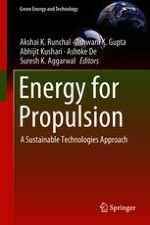2018 | OriginalPaper | Chapter
Effect of Alternative Fuels on Emissions and Engine Compatibility
Authors : Bhupendra Khandelwal, Charith J. Wijesinghe, Shabarish Sriraman
Published in: Energy for Propulsion
Publisher: Springer Singapore
Activate our intelligent search to find suitable subject content or patents.
Select sections of text to find matching patents with Artificial Intelligence. powered by
Select sections of text to find additional relevant content using AI-assisted search. powered by
